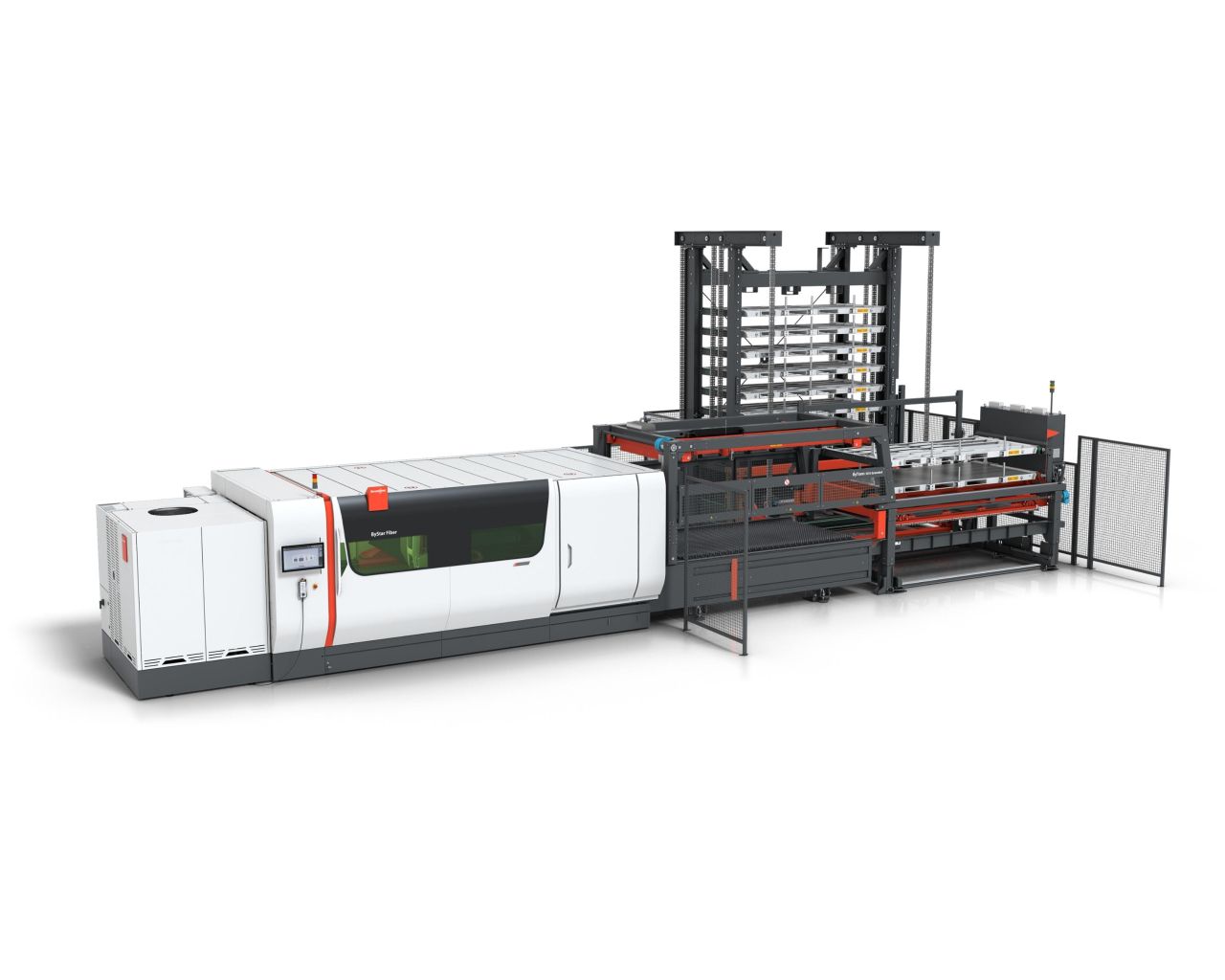
Blog Benefits of Material Automation in a Fiber Laser Cutting Environment
Maintaining consistent material flow
With today’s Fiber laser cutting machines and their capability to process a vast amount of sheet metal on a daily basis, maintaining materials at the ready is essential to maintaining a consistent pace of production. For this reason, it is important to have some form of automated material handling and material storage so that the raw materials are cycled to the machine in a timely manner. Automating the retrieval, load, and unload cycles is the key to maintaining the productivity capability of today’s fiber laser cutting machines as well as other machines on the fabrication shop floor.
Identifying variabilities in production
For the most part, laser cutting systems without material handling automation display the most variability in their production time during the loading and unloading process. If you analyze the waiting or idle times from the machine data, the waiting times are notoriously evident. This is due to either a lack of raw materials having been supplied to the machine or a lack of unloading cut parts before the machine has finished processing the previous sheet. Herein lie the additional opportunities for improving material handling as a way to increase manufacturing efficiency and reduce overall processing time.
Supplying raw materials
So the programming system has released the cut programs to the machine. How does your system react to this request? Does someone now retrieve the raw material from a material storage area using a forklift and bring it to the machine? How much time is accumulated performing this action for each and every material changeover? If you are in a high-mix environment with many daily changeovers, an automated material storage system can supply multiple materials types and thicknesses across multiple machines. With an automated material storage system, as programs are released to the laser cutting machines and loaded for processing, the communications to the material storage system is achieved automatically. This way, the raw material is moving to the machine while the machine is still processing.
Maintaining a consistent pace of production
The benefits of automating material storage lay in the efficiency factor: Material storage systems enable the seamless transition of material changes from job to job, reducing non-productive waiting times. How often have you seen a laser cutting machine sitting idle because it doesn’t have the material to process the job?
Keeping a machine supplied with the proper materials and in a timely manner is a task that requires precision timing. Often, it is the task of a forklift operator or even the machine operator to make sure the laser has the required materials, but timing is everything and inevitably this leads to inefficiencies and lost production time.
Maintaining materials at the ready is essential to maintaining a consistent pace of production and reducing non-productive time. In addition, maintaining a material storage system provides the ability to purchase raw materials when the price is lower to offset any unforeseen price increases to future raw materials purchases.
An essential component for high mix environments
If you are operating in a high-mix material environment, automating the material storage and handling is essential. Each changeover of material is an opportunity to either maintain your pace of production or add non-productive time. The higher the changeover rate, the higher the risk of production loss due to not having the proper materials supplied to the machine.
Today’s modern laser cutting machines are able to gather statistical data on the productivity of the machines and also non-productive waiting times. If you are in a high-mix material environment it is prudent to measure the non-productive waiting times for continuous improvement purposes and to justify material automation.
Competitive advantage
Maintaining materials ‘at the ready’ with automated material storage systems eliminate inefficiencies when changing materials from job to job and maintains a consistent pace of production. You now have a plan that compensates for fluctuating market condition prices, is able to deliver parts faster and less expensively, is more efficient with material handling, and will most likely win you more business.